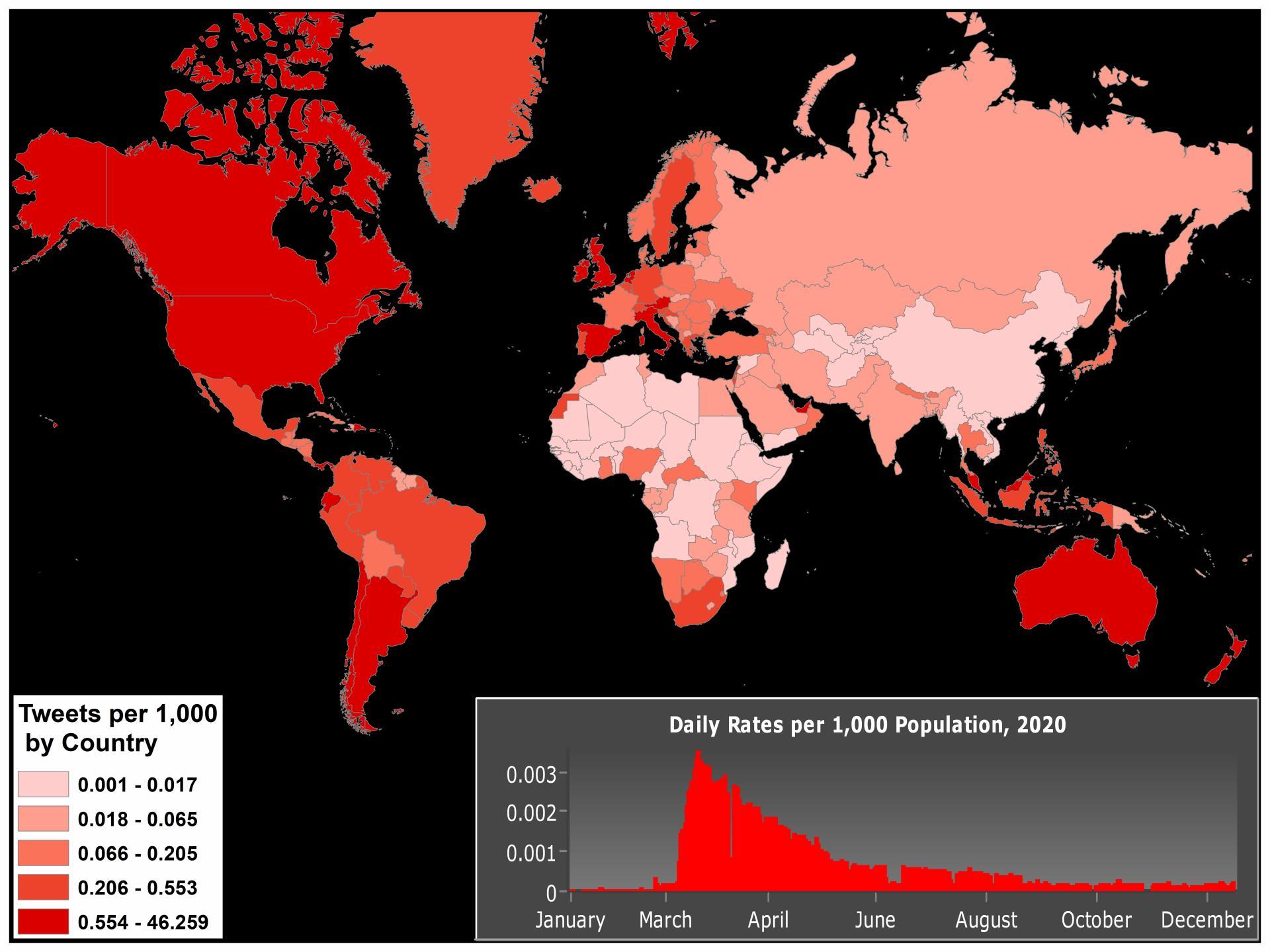Social media data, including those from social networking services (e.g., Twitter, Facebook, and Instagram) provide massive amounts of rich textual data in real time.
The rapidly spreading Sars-CoV-2 (COVID-19) virus has reached every corner of the world. A major challenge in studying the social and behavioral aspects of COVID-19 is that traditional social data collection methods are slow, labor intensive, and expensive. Further, such methods may do a poor job of measuring key population characteristics and behaviors, even when robust probability sampling is used. Among those social media sources, Twitter provides a highly accessible big data stream and has drawn interest from researchers in many disciplines.
WebGIS
Data download: [COVID-19 geotagged tweets]
Citation: Chi, Guangqing, Junjun Yin, and Yosef Bodovski. 2020. "Global Tweet Mentions of COVID-19." [webGIS product]. Released on April 6, 2020.
By studying tweet mentions over space and time, researchers can track phenomena such as public awareness of COVID-19, social distancing, anti-lockdown advocacy, attitudes toward reopening communities, concerns about the economy, anti-Asian sentiment, mental health problems, and others.
Also, because the dataset is large, investigators can draw meaningful information from small geographic units (e.g., counties, neighborhoods) and fine time intervals (e.g., specific days).
A geotagged tweet is denoted with the latitude and longitude of the location from where it was sent.
To enable the use of Twitter data for studying the social and behavioral aspects of COVID-19, we developed a dashboard to track global tweets about the disease across time and space.The data come from the 100% geotagged tweets that we have collected continuously since January 2020. The data include all geotagged tweets with keywords or hashtags related to COVID-19 in English, Spanish, French, Italian, German, Chinese, Korean, Japanese, and other languages. A Twitter user who is concerned about being infected might tweet across multiple days about symptoms, seeing a health care provider, having a blood test, and/or receiving lab results.
